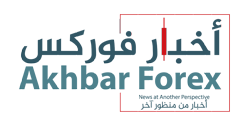The Labor Department reported Tuesday that the U.S. consumer price index rose more than expected in January, as the continued rise in housing prices weighed on consumers..
The Bureau of Labor Statistics reported that the U.S. Consumer Price Index, a broad-based measure of the prices shoppers face for goods and services across the economy, rose 0.3% during the month. On a 12-month basis, that came in at 3.1%, down from 3.4% in December. Economists surveyed by the Dow Jones had expected a monthly increase of 0.2% and an annual gain of 2.9%..
Excluding volatile food and energy prices, the core US consumer price index accelerated 0.4% in January and rose 3.9% from a year ago, unchanged from December. The forecast was 0.3%. Shelter prices, which account for about a third of the weight of the U.S. consumer price index, accounted for most of the increase. The Bureau of Labor Statistics said the index for this category rose 0.6 percent month-on-month, contributing more than two-thirds of the major increase. On a 12-month basis shelter increased
Food prices also rose 0.4% month-on-month. Energy helped offset some of the increase, down 0.9% largely due to lower gasoline prices and stock market futures falling sharply after the release. Dow Jones Industrial Average-linked futures fell more than 250 points and Treasury yields rose. Even as prices rose, U.S. CPI-adjusted earnings rose. However, after adjusting for the decline in the average working week, real weekly earnings decreased by and the average real wage increased compared to last year..
US consumer price index leads to higher bond yields and falling stocks
Bond yields rose and stock futures fell as traders pulled back their bets on Fed rate cuts after a stronger-than-expected inflation report.
Two-year Treasury yields, which are more sensitive to the Fed’s impending moves, jumped 12 basis points to 4.6 percent. The Fed’s swaps shifted the full pricing of the rate cut to July from June. The S&P 500 fell 1 percent, while tech-rich Nasdaq 100 futures underperformed. The U.S. dollar rose in early trading in North America after the release of higher-than-expected CPI data for January. The perceived risk gauge jumped in the U.S. investment-grade corporate bond market. but simply means that prices are rising more slowly.
The core consumer price index, which excludes food and energy costs, rose 0.4 percent from December, the biggest rise in eight months, according to government figures released on Tuesday. Compared to last year, economists prefer the core measure as a better indicator of core inflation than the overall CPI. That measure advanced 0.3 percent from December and 3.1 percent from a year ago.
The release comes as Fed officials look to determine the appropriate balance for monetary policy in 2024. Although financial markets were eyeing deep interest rate cuts, policymakers were more cautious in their public statements, focusing on the need to allow data to circulate. Their guide instead of predetermined expectations . Consumers still feel the brunt of the high prices of the things they buy most often. Inflation is generally moving in the right direction, but it is important to remember that a decline in the US consumer price index does not mean that the prices of most things are falling

US Consumer Price Index: Slowing inflation and delaying interest rate cuts
We have gone beyond just looking at the actual rate of inflation and are now focusing on the level of slowdown in inflation in goods and services, but everything seems to be going hotter than expected. The Fed will feel right in the language it has been using on interest rate cuts, as there is no doubt that they have been pushed further .
We’re not worried about accelerating inflation, but we’re not out of the crisis yet. A stronger-than-expected U.S. CPI reading on Tuesday could cause the Fed to delay interest rate cuts beyond May and June, when the market expects the Fed to start cutting interest rates. Reaching the Fed’s magic inflation target of 2 percent may It is more difficult than expected and leads to higher interest rates for a longer period of time .
The decline in price pressures has helped build expectations in financial markets for a rate cut this year, although Fed officials have recently rejected the idea of impending cuts. They have pointed to a strong labor market as a reason they can take their time to make sure inflation continues to decline before starting to ease .
Money markets have recently trimmed bets on rate cuts, pricing four quarter-point cuts by the end of the year with a 40% probability of rate cuts, according to swaps linked to policy meeting dates. The first such reduction is fully priced by June, with two out of three odds of a reduction in May .
